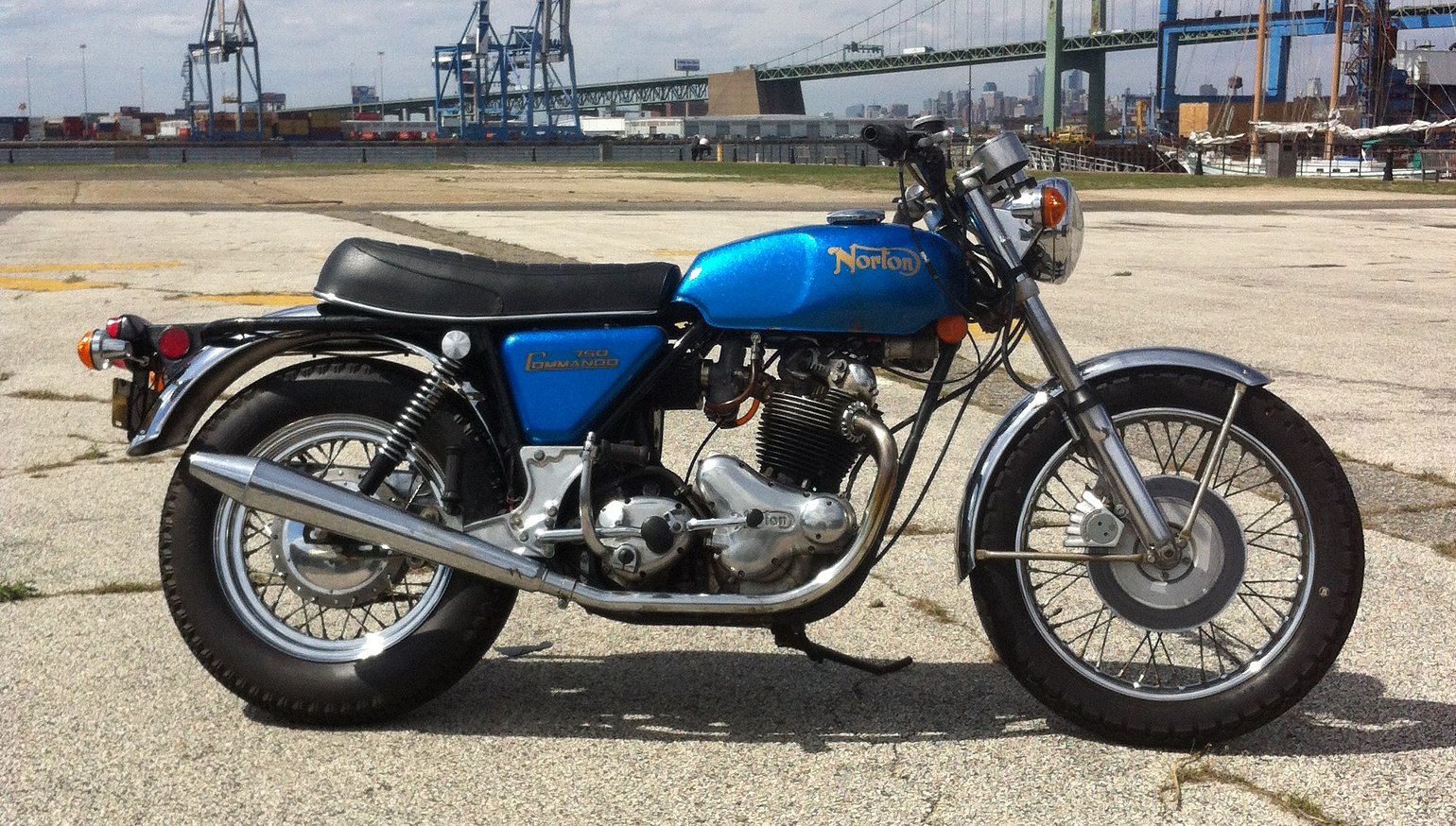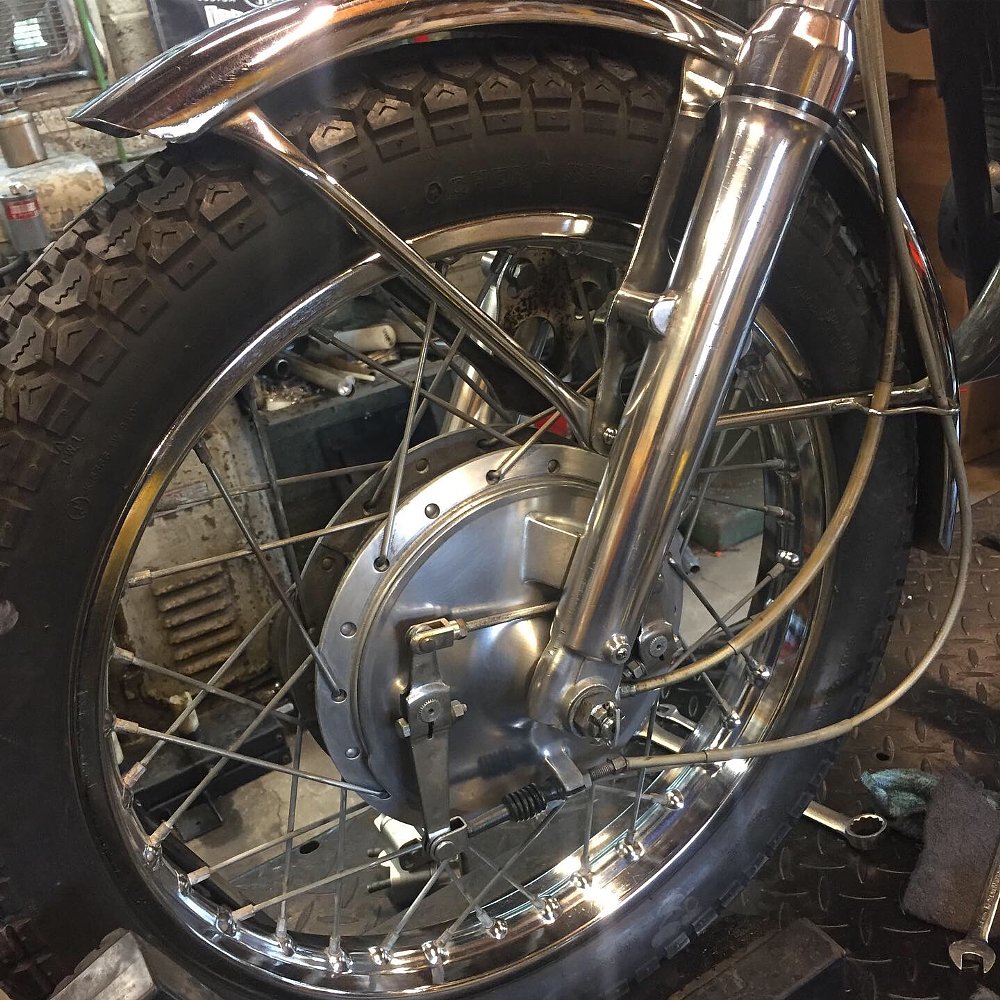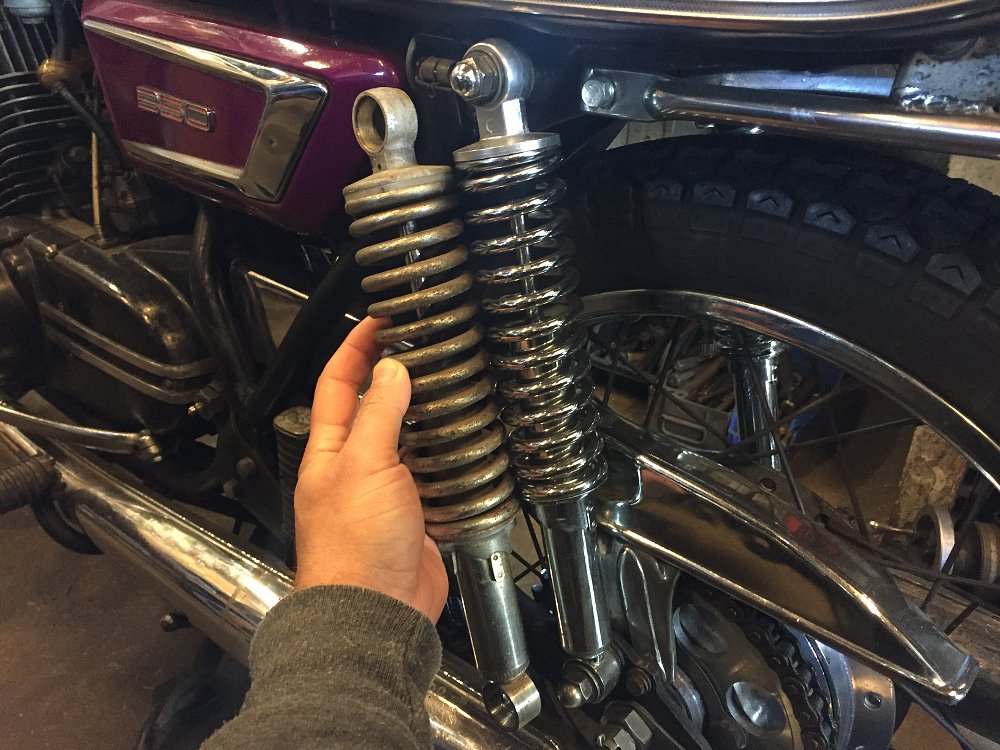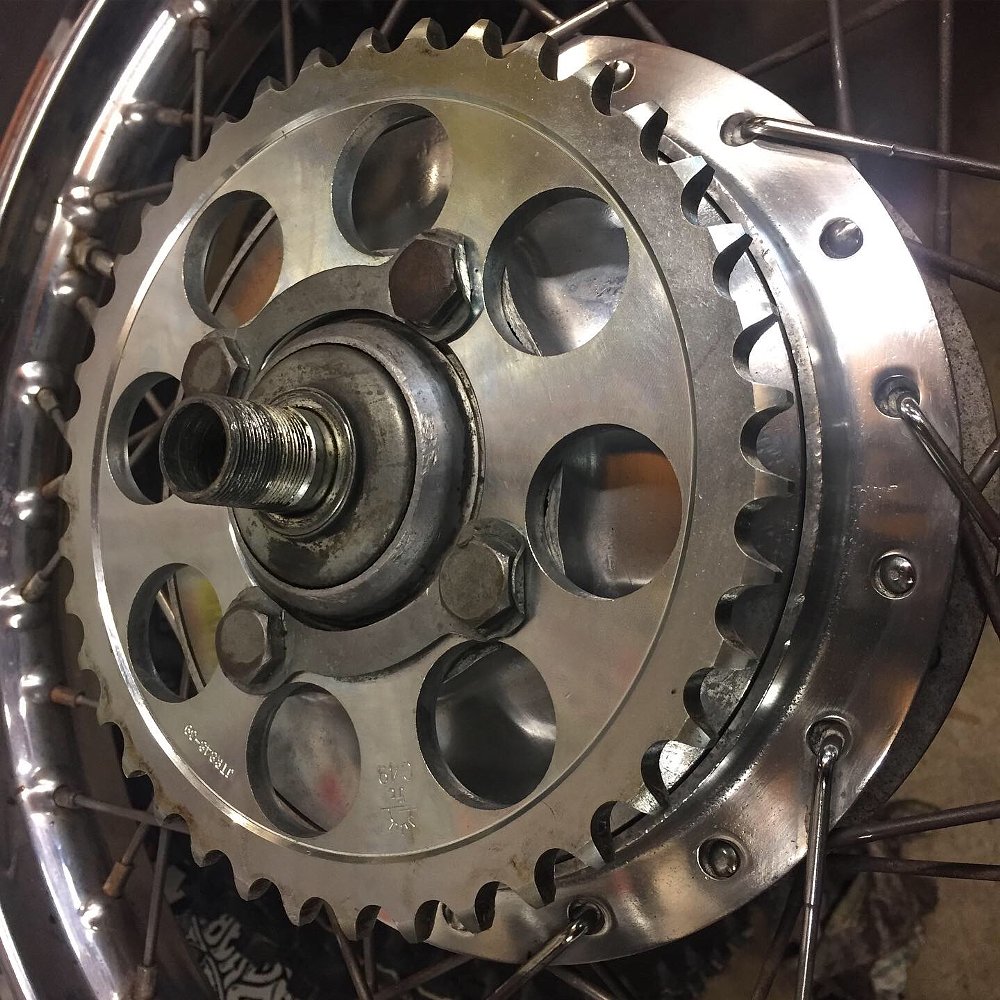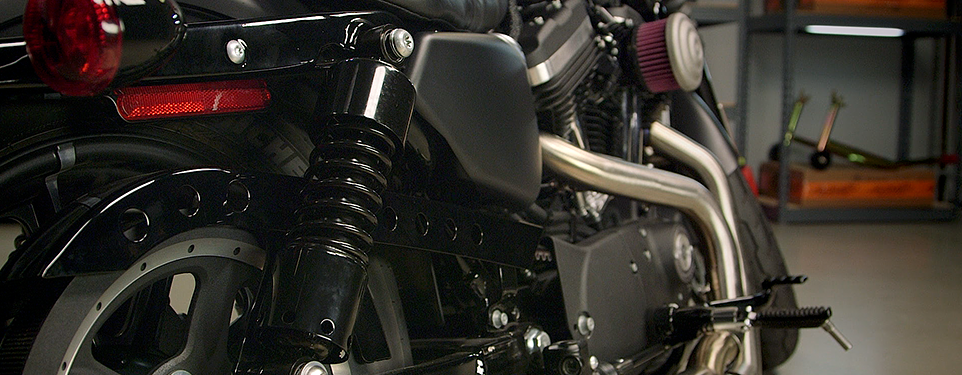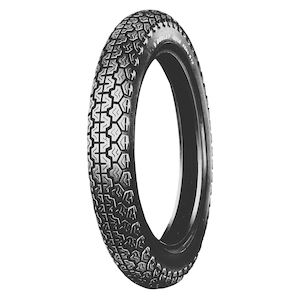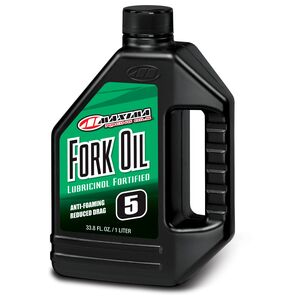You recently scored a vintage motorcycle, spent hours cleaning and tuning it up and finally took it out for a long ride. But maybe the sketchy handling makes it less fun to ride than you were expecting. It doesn’t have to be this way!
A few worn out parts can take the fun out of riding an old bike, but a little time in the garage can fix that. Let's work from the ground up to cover some improvements you can make to a vintage motorcycle to get it handling like new again.
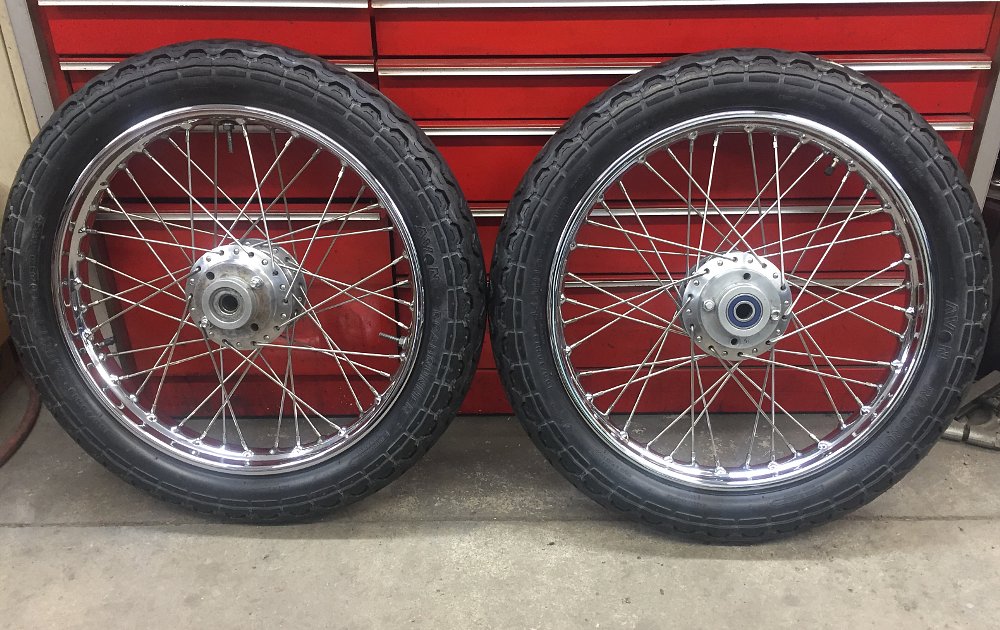
Wheels and tires
I often see quite a few vintage bikes out there wearing rock-hard, dry-rotted and cracked tires. Replacing them with new tires is the easiest and biggest improvement you can make to enhance the ride quality and handling of your old bike. There are a ton of vintage-style tires available to match the look or performance you’re going after and, more importantly, come in the correct sizes for your bike.
Many vintage bikes have spoked wheels, which means they can usually be retensioned and trued (straightened) if they are wobbly. If the rims have seen one too many potholes or have rusty spokes, you can replace them yourself and have perfectly round and straight wheels, just like they were when they rolled off the showroom floor decades ago.
Replacing your old wheel bearings with a new set of sealed ones is a relatively easy job that will not only allow the bike to roll nice and smoothly, but also will take any lateral slack out of the hub that's caused by worn ball bearings and races. A tiny fraction of an inch of play in the bearing can easily mean a much bigger wobble at the tire. Fresh bearings are a big improvement in how a bike handles.
Front suspension
Start by checking for play in your fork lowers. This is easier to do if you have the front wheel off, allowing you to feel each one independently. Many forks feature replaceable bushings to allow you to be sure your forks lowers and sliders move up and down smoothly, without any slack. Once your front wheel is off, it is usually only one bolt per slider to separate them from the fork tubes. This is a great way to ensure your damper rods move freely and are not rusty. This is also a great time to replace your fork seals and dust wipers.
With the fork tubes remaining in the triple clamps and the sliders removed, lay a straightedge on all sides of the fork tubes to ensure they are not bent. If you don’t have a straightedge, you can simply remove each tube from the triple clamps and roll them over a flat surface. This is a surefire way to locate a bent fork tube.
If you find that you don’t have any reason to disassemble your fork, at the very least, change your fork oil. With the old-style damper rod forks, you can experiment with different fork oil weights to change how the fork responds. Heavier oil equals more damping while lighter oil decreases damping. I recommend only going one or two grades in either direction from what your manual recommends for best results.
For folks pushing the limits on their old bike, a big improvement for your front fork is a Race Tech Gold Valve Cartridge Emulator. They are available for a lot of different models and makes your fork operate like a modern cartridge-style fork while maintaining the look and originality of the stock damper-rod fork.
Rear suspension
Twin rear shocks commonly found on older bikes are easy to inspect and replace. Ensure there is no play at the upper and lower eyelets where they mount to the bike by raising the rear of the bike and giving them a wiggle. A little motion is OK, since they may have rubber bushings, but if there is a noticeable clunk, it's time for new bushings. Also, check for leaks and pitted shock shafts. Rear shocks are oil-filled from the factory to provide damping and are usually neglected for the life of the bike. If you remove them and give them a quick bounce with your hands against the ground and they get stuck or come back way too quickly, it’s time to replace them.
There are plenty of replacement shocks available for a variety of bikes and in many different lengths. You can upgrade to better ones that feature more preload adjustment and adjustable damping, which will certainly improve your vintage bike’s ride quality.
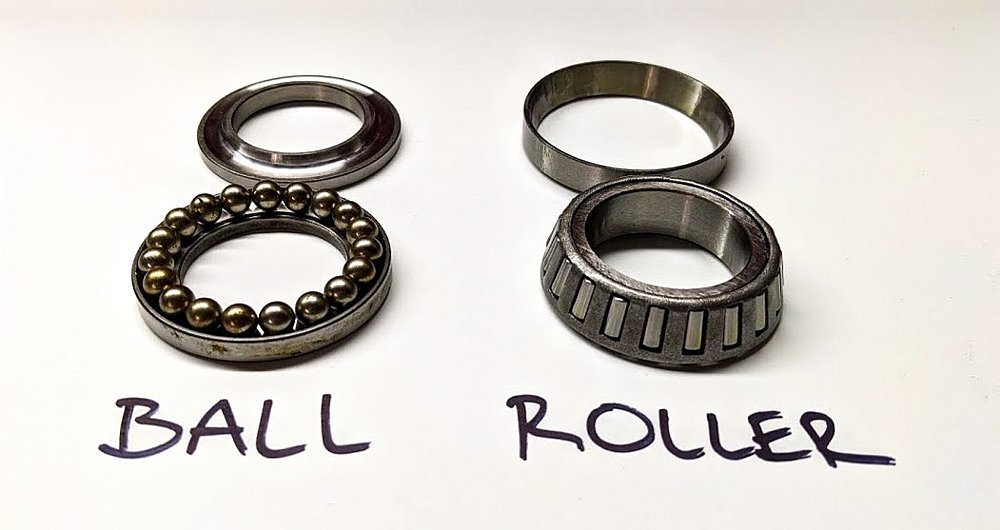
Chassis
Steering head bearings are another often-neglected service item when it comes to older bikes. This causes the bike to want to self-center the fork while riding, since the ball bearings have usually made indents in the cups. This surely makes the bike feel weird to ride. Thankfully, replacement bearings and races are easy to come by for most older motorcycles.
A popular upgrade is to swap from ball bearings to tapered roller bearings. These bearings spread the load over a bigger surface area, which prevents them from making those indents I mentioned earlier.
Add swingarm bearings or bushings to the list of often-overlooked maintenance items. When these items are neglected, it causes excess free play between the swingarm and frame. This makes the rear wheel wander around in relation to the front wheel. Certainly another “bad feeling” when it comes to riding old bikes. Usually you can check for this free play by grabbing the top of the rear wheel and trying to move it side to side while holding the seat of the bike. You should not feel any looseness or clunking here.
Thankfully, this is a relatively easy fix. Replacement bushings or bearings are available for most bikes. Sometimes you may be better off taking the swingarm to a local cycle shop to have them press in your new bearings and seals, but this is a relatively low-cost way to get your old bike handling properly again.
Driveline
If your vintage bike is chain-driven, you will want to inspect the condition of your chain and sprockets to see if anything needs replacing. Once you ensure that your chain and sprockets are in good condition, check the cush drive rubbers. These are rubber dampers typically found in the rear hub that isolate the driveline from the rear wheel. This is to protect your transmission from mechanical shock delivered to the rear wheel from the road surface. Once these rubber dampers break down, they allow driveline slop from acceleration and deceleration forces from the chain to the rear wheel. This excess movement makes a bike feel disconnected from the throttle. You might even feel a clunk in the footpegs from worn cush drive rubbers.
Again, this is a relatively inexpensive and easy repair to make. Just remove the rear sprocket carrier and swap out the old rubbers for new ones. This has made a big difference in the overall feeling of quite a few old bikes I’ve ridden. Some bikes have a cush drive built into the clutch or primary drive instead of the rear hub, so be sure to reference your factory service manual to see where they are in your machine specifically.
The takeaway here is that old bikes tend to be worn out. This can make them feel a little unstable or unpredictable on a ride, but with a little TLC and thoughtful upgrades, your old bike can handle like new again and be a lot more enjoyable to ride.




